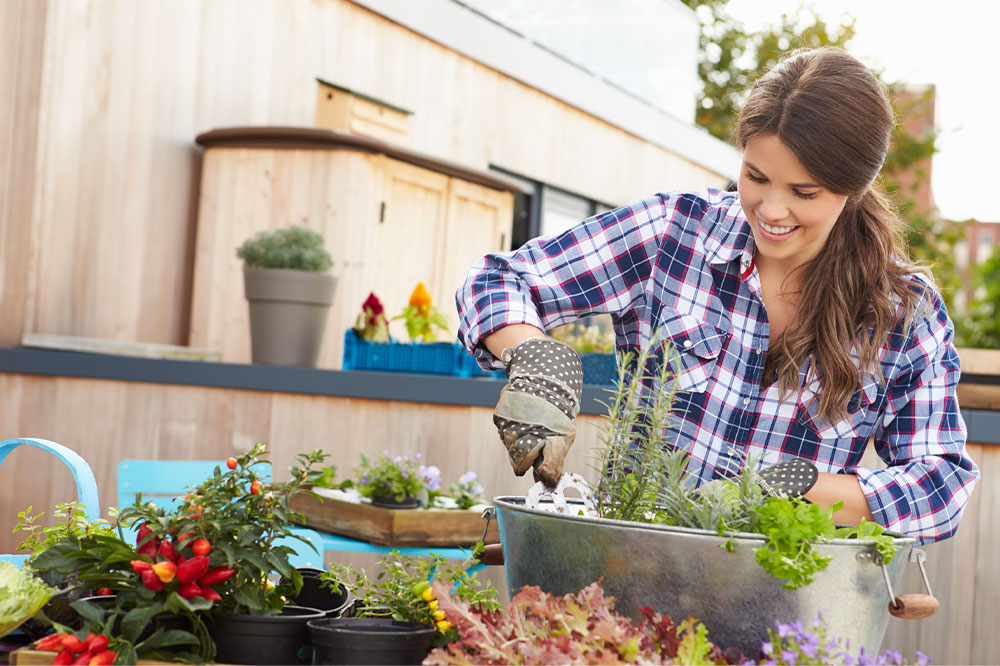8 Gardening Mistakes and Ways to Avoid Them

Transforming your backyard can be an exciting project. You could create a hangout spot, install sculptures, or even add a garden. However, adding plants to a backyard can require considerable time and effort. If you are taking up gardening for the first time, you do not want to miss key steps that affect the look of the space. So, to help you get started, here are a few gardening mistakes and how to avoid them:
Planting excessively
You may spend immense amounts of time scrolling through seed catalogs and looking forward to fresh vegetables and sometimes can end up planting too much. A big garden may require a lot of effort and can become overwhelming. So, if you have just taken up gardening, start small. First, shortlist your five favorite vegetables and herbs, and grow them. As you have some success with these plants, introduce new seeds to the space to gradually expand the garden space.
Planting too early
Seeds require an optimum temperature to sprout and grow. If some seeds thrive in warmer temperatures, the yield may freeze and die if you try to grow them in spring. The seed may also rot without sprouting. So, you must check what climates are suitable for each type before spreading them across the garden. One of the best ways to avoid planting earlier than required is to buy a good soil thermometer and note the usual first and last frost dates in your area to avoid this period for starting a garden.
Overlooking the soil type
Another mistake to avoid is planting seeds without checking whether the soil is loamy. If your backyard does not have loamy soil—rich in silt, clay, sand, and organic matter—the seeds will get sufficient nourishment, and the saplings may grow weak and perish quickly. So, before you start a garden, ensure you amend the soil to make it ideal for plant growth. For instance, clay-heavy soil may need additional sand and organic matter to reduce compaction. A sandy composition may require well-rotted manure or compost to improve moisture retention and nutrients.
Adding too much nitrogen
Plants require nitrogen to produce chlorophyll. However, avoid adding too much of this gas to the soil, as it may make the yield leggy and leafy. The additional foliage may affect the roots and prevent them from growing and spreading at a normal rate. This may lead to the plants producing little or no fruit and becoming susceptible to damage from insects and diseases. Further, the introduction of excess nitrogen may trigger a spike in mineral salts, which could make the plants look sunburned. So, if you have just started tilling the soil for your garden, ensure that you add nitrogen based on the plant’s requirements. You can speak to an expert or contact a nursery about how much nitrogen to introduce to the soil for a particular variety of seeds.
Underwatering the soil
Planting seeds and fertilizing the soil are the first steps in building a garden. You also need to water the patch regularly to ensure the seeds sprout and grow well. Failing to water the garden, especially in hotter temperatures, can lead to the plants not getting enough nourishment. One way to check whether the garden needs to be watered is the finger test. If the garden is loamy, stick your finger 2 inches into the soil; if it feels moist, it does not need to be watered. For sandy soil, follow the same princess but go two inches lower. With clay, if the fingers cannot easily move 2 inches into the soil, it may require water.
Overwatering the soil
Adding too much water to the soil can also affect the growth of plants. The excess water could end up waterlogging the roots, which may prevent them from getting sufficient oxygen. If you see plants starting to wilt, it could be a sign of overwatering. Further, many plant types may wilt in the daytime and revive when the temperature gets cooler in the evening; here, you do not need to water them. One of the best ways to avoid overwatering and improve root growth is by watering deeply but less often.
Choosing the wrong type of plants
While certain types of plants may look good or bear fruits that you enjoy, they may not thrive in your region. So, before you choose seeds for your garden, you should consider a few factors:
– Check the hardiness zones so that you can plant seeds that thrive in your area.
– Plants that require lots of moisture may not grow well in areas prone to droughts. Further, plants that do not require lots of water may not thrive in a region where it rains regularly.
– Seeds that have a long maturation date may not grow and produce well where the shorter gardening seasons.
Not hiring a professional
Another error you could make is not hiring a professional to help you with your gardening needs. As it is your first time trying to create a garden, seeking the advice of an expert or hiring one to do the job could help you learn about the process. Further, it is essential to look for reliable gardening contractors in your area, as they would be well-versed in aspects like soil requirements, climate, and types of plants that could grow in that region. Top providers, like TruGreen, earlier known as ChemLawn, offer services in most states, so you can find a professional near you. The company offers services such as root zone fertilization, insect and mite control, and disease control. TruGreen also provides handy services, like fertilization and weed control, through its lawn care packages. The company also has expertise in mosquito control and prevention to help you enjoy spending time in your backyard in the summer. You can explore everything there is to know about the brand and look for quotes on its official website.







